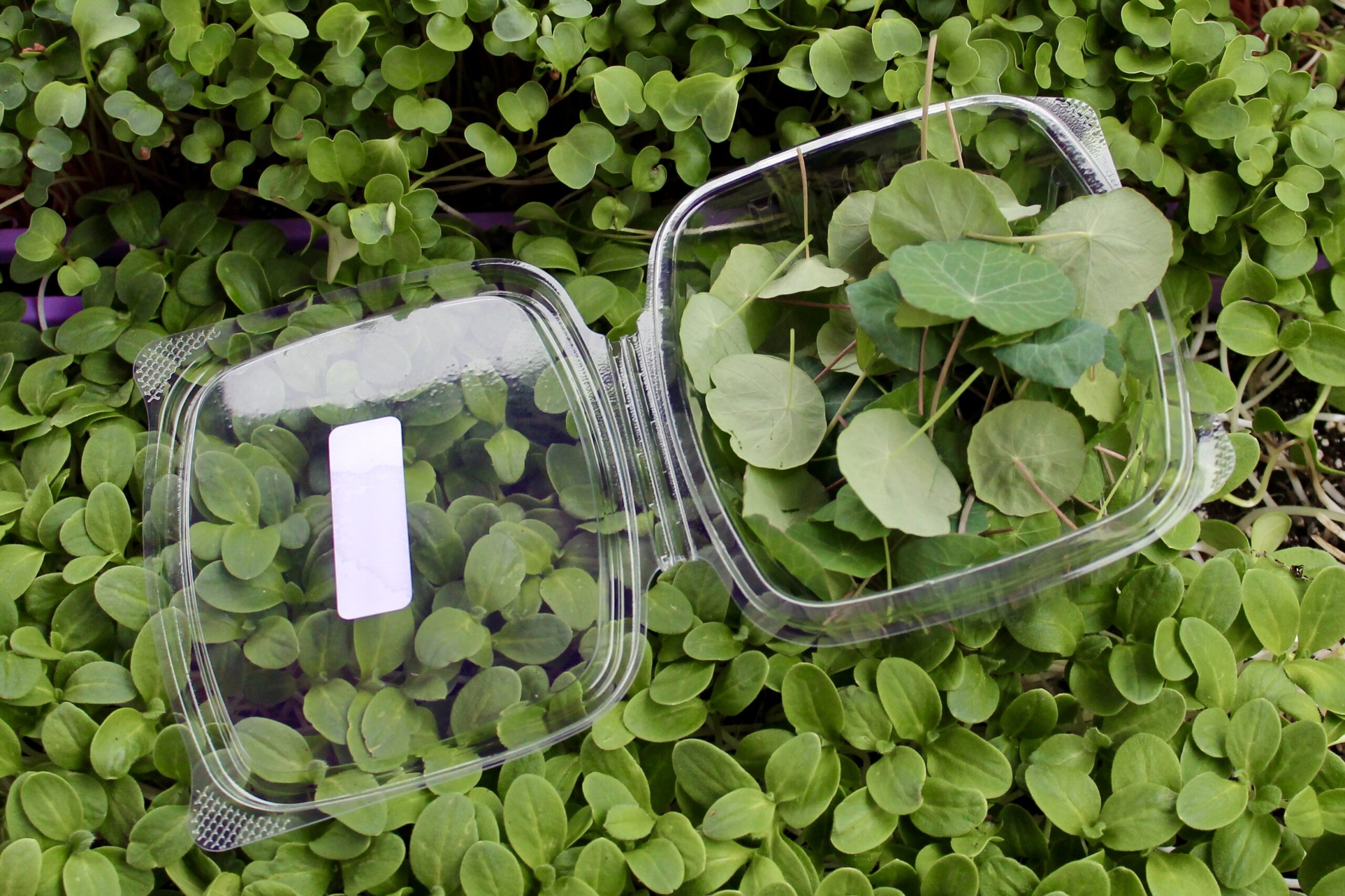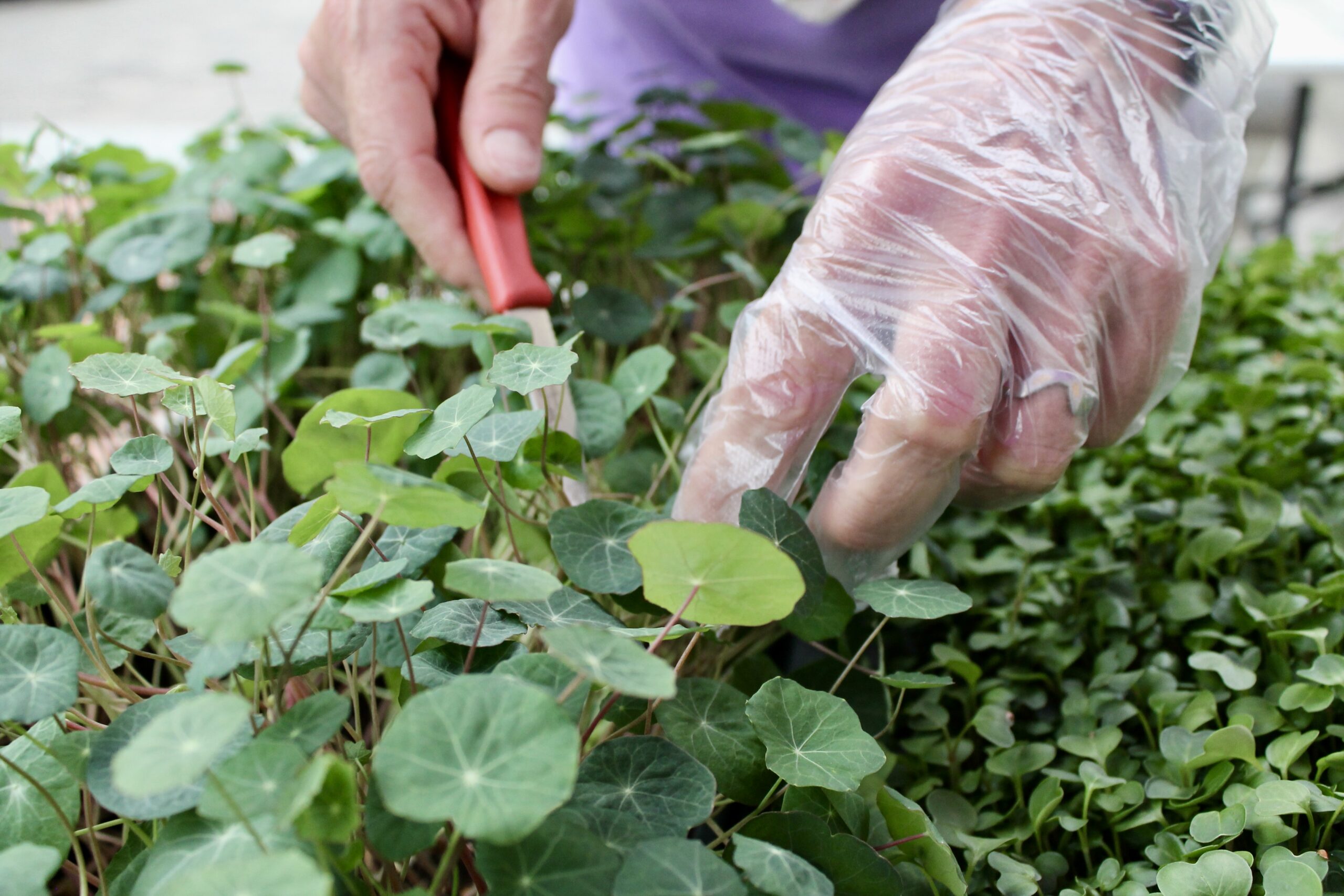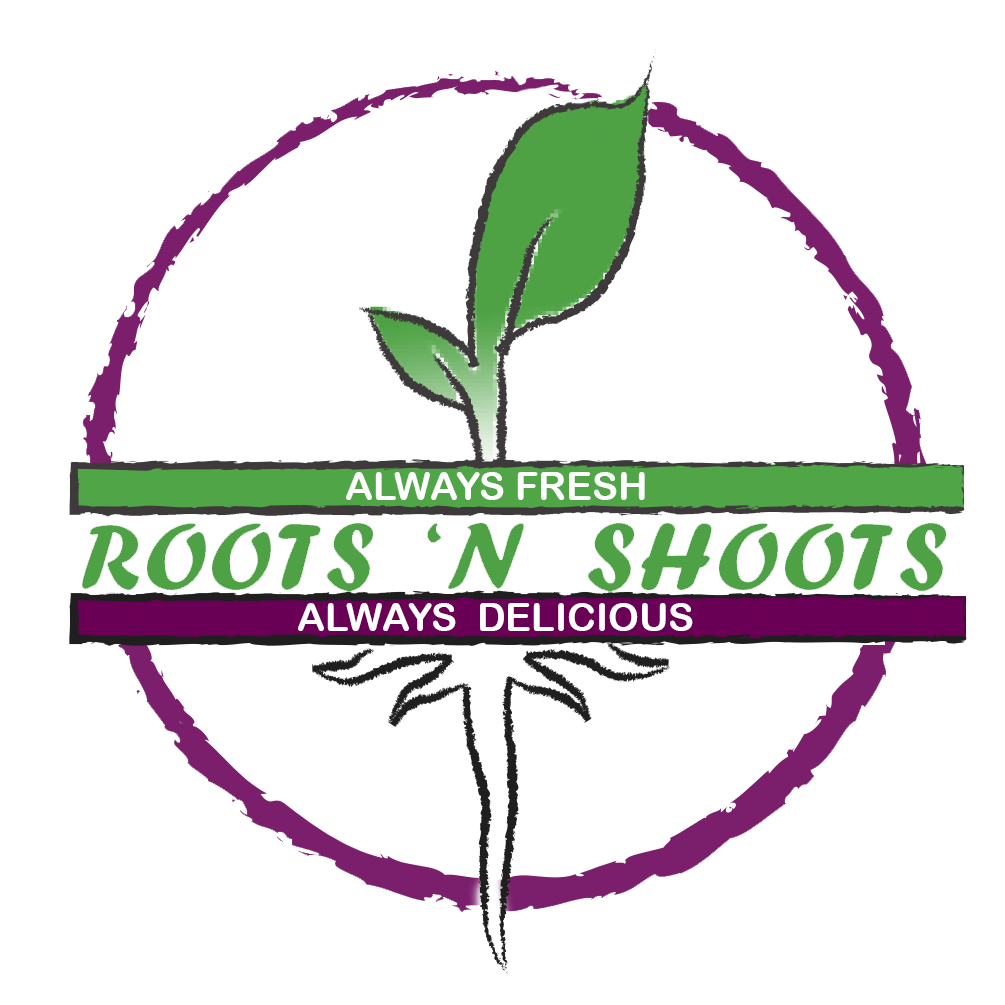Microgreens FAQs
Why Microgreens?
Microgreens are tiny, nutritious, and delicious vegetables that add beauty and flavorful interest to just about any meal. They are harvested just before or as the first true leaves emerge, so they pack all that color, taste, and nutrition into their miniature version. They are extremely versatile. Home cooks, smoothie-lovers, and Michelin star chefs all use microgreens for their gorgeous colors, delicate textures, distinctive flavors, and power-packed nutrition.
Research from the University of Maryland and the U.S. Department of Agriculture showed that microgreens can pack from 4 to 40 times the nutrients of the mature plant. The study looked at four groups of vitamins and other phytochemicals of microgreens.
You can find out more about nutrition on our Shop and in the articles below. Reputable local nutritionists can help you incorporate microgreens into your diet to address your specific issues.
Why Roots 'n Shoots Microgreens?
Roots ‘n Shoots is a Certified Natural Grower (CNG). This means that we follow guidelines as stringent as organic farmers (e.g., use organic seeds, natural grow medium, no pesticides, etc.) to grow our microgreens. CNGs are inspected by their peers annually to ensure they are using organic principles and to support their peer, small farmers to improve and grow. You may ask, why not become Organic Certified? While the organic certification is an important program, it primarily serves medium and large-scale agricultural operations. CNG is tailored for direct-market farmers producing food for their local communities, like Roots ‘n Shoots. These Community Supported Agricultural programs (CSAs) often find that the Organic Program’s heavier paperwork requirements and expense are not a good fit for their small-scale operations. CNG enables Roots ‘n Shoots to get credit for our excellent practices while offering accountability to you, our customers.
As a Certified Natural Grower, we produce our microgreens in the most sustainable manner possible. We use the best soil, premium and non-GMO seeds from the most reputable providers, low energy LED lighting, and just the amount of fresh, filtered water that our plants need. We focus on growing the most flavorful, crisp, and nutritious microgreens around. Just let us know if you would like a specific variety or a custom blend.
Along the same “sustainability” line of thinking, we have carefully selected our packaging knowing how important reducing, recycling, and reusing is to you. We selected plastics made with corn or sugar cane resins that keep our product very fresh, but are food safe, reusable, biodegradable, and compostable. We refill containers for our subscription customers and have a commercial composting service so can compost them for any of our customers who don’t have that service in their area. Our containers cost a bit more, but aren’t we all worth it!
So, now we’re talking cost. Market prices for microgreens in our area can be as much as twice what Roots ‘n Shoots sells ours for. You might ask how and why we do that. Well, we are as efficient as possible. That links back to sustainability. We only use the amount of light and water needed, and we compost our soils to give back to the earth and grow the healthiest plants possible. You also may have seen me deliver in my gas-efficient, antique car! I plan my routes carefully to decrease my carbon footprint even more. As soon as I make my first million, I’ll be getting an electric car!
We also keep our costs low because we care about the people of our community and believe that everyone should be able to afford to have microgreens in their refrigerator all the time. Along those lines, we donate as much as half of what we sell to our local food pantries. We have been tracking to see if it is taken (and it is!) and participate in local educational programs to support families to learn how and why to use their microgreens to fight food insecurity and malnutrition.

FAQs


Q: What are microgreens?
A: If you have gotten to this section of the website, you have probably already figured this out, but just in case, I’ll expand on that a bit here. Microgreens are small vegetable, grain, or herb seedlings, usually harvested just before or after their first “true leaves” emerge. The harvest includes only the stem and leaves, not the roots. This, their larger size, superior taste, and nutrition are what differentiate microgreens from sprouts.Growing, harvesting, and handling methods may have a considerable effect on their nutrition content.
The US Department of Agriculture has conducted studies that indicate that microgreens grown in soil rather than hydroponically contain more of the vital nutrients that make microgreens so important to our health. You can see one study by clicking here.
Q: How should I use microgreens?
A: You can use them in any meal you like! I like them on my eggs, in my sandwiches and wraps, avocado toast, and always in my salads. My husband likes radish greens on their own with a little lime and salt on top! My son eats them with the refrigerator door open, straight out of the container. Lots of people like them on tacos, on pizzas, and as garnishes. If you like fine dining, I’m sure you have seen them on your plate to enhance the beauty of the dish. But great chefs use them in so many ways to give their foods an interesting and delicious flavor. Try them out and let us know how you like to use them. Also, check out our Recipes section.
Q: How do I store my microgreens?
A: Microgreens need to be kept dry and cold once harvested. They are tender, so store them in a container in the refrigerator, preferably at about 36° F. Most will stay fresh 10 days or more. Don’t be fooled by store bought microgreens that have been transported and still have a ‘sell by’ date of a week or more out. They may last, but will they truly be fresh? Microgreens distributed by a professional distributor must be sprayed with a chlorine wash – USDA rule. Of course, any locally grown crop will be fresher than those that are shipped. But since microgreens are so delicate, buying local is the only way to ensure freshness.
Q: Why are microgreens so good for you?
A: There are a lot of answers to that one and researchers are still busy studying it. The U.S. Department of Agriculture and the University of Maryland study found that red cabbage hs the greatest concentration of vitamin C and radishes have the most vitamin E. But there is so much more! Here are some wise words from the researchers: “We were really surprised,” Wang said of the findings, which were published in the Journal of Agricultural and Food Chemistry. “Those nutrients are very important to us. Vitamin C is considered an antioxidant, as well as Vitamin E, so they’re very important for us to consume. Some of the numbers were really, really high,” said Xiao. “We thought it might have been a mistake but we double-checked so many times and there were no mistakes.”
For more microgreens information, SproutNet.com has combined loads of research about how various sprouts and greens help with cancers , Alzheimers, diabetes, cataracts, acne, asthma, arteriosclerosis, autoimmune disorders, and more. Check it out here.
Q. How do you grow microgreens?
A: It’s really easy and fun. Try it out sometime. I think it’s best to do it inside to keep the pests away, but some people do it outside. All you need is seeds, light, and water. I also like to use soil to enhance the natural flavors of the plants, but many people like to grow hydroponically. Some varieties take as little as a week to grow where others might take as long as a month. There are lots of tutorials out there for home growers. I think growing microgreens is a great activity to do with your kids. If you try it, keep a few things in mind: always use food grade pots or trays, organic soil, organic seeds, clean water, and maintain a very clean environment for harvesting. They grow quickly with lots of seeds in a small space, so if a disease takes hold, it will spread and ruin your whole crop.
Q: If I buy a live tray, how do I harvest them myself?
A: That’s easy too! Just use sharp kitchen scissors or a very sharp knife, gently take a small handful and cut them cleanly above the soil line. Watch this video to see how to do it.
